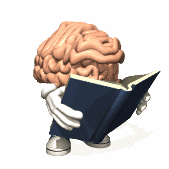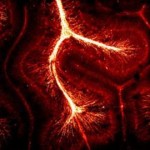What should teachers know about the brain?
If you are using learning principles based on neurological research to guide the way you teach then you must believe in a learning theory known as brain-based learning.
Brain-Based Learning
I find brain-based learning a somewhat confusing term. Surely the brain is the processor of all learning?
Indeed, but brain-based learning looks at how our brain functions, and what set of conditions, activities and experiences can lead to the most effective learning. For teachers, this means considering how teaching can be made more effective by providing lessons that are ‘Brain compatible’. It is all about teaching with the brain in mind.
But this is not a new concept in education! The idea of using knowledge of the way the brain works to guide educational practice was put forward some twenty years ago. Back then there were many critics that argued it was futile to try and use neurological research to guide educational practices.
So why has ‘brain-based’ education suddenly been resurrected? The short answer is that recent developments in technology have allowed neuroscientists to come a lot closer to understanding the way our brains work; we are nearer to knowing how we learn.
While there is still a lot of uncertainty, scepticism and outright rejection of brain-based learning, we as teachers cannot ignore those principles that have developed out of brain-based learning and have since been applied, and proven by some educators to make learning more effective. We must take a new look at teaching and recognise that some of our teaching methods may be out-dated and could even be hindering some of our students rather than assisting them with their learning. All things evolve and as teachers we cannot afford to remain stationary, we should always be looking for a better way of doing things. Brain-based research provides increasing insight into how our brains work. It should not be ignored. It may have many and great implications for the way we should be teaching.
Yes but what should teachers know about the actual brain?
Knowing about the brain takes us a step closer to understanding the nature of intelligence. This kind of knowledge of the brain requires an understanding of the physiological, social, emotional, constructive, reflective and dispositional dimensions of the brain.
So, as a teacher do I really need to know about the physiological dimensions of the brain?
This is a question that I have wrestled with for a while now. As if life isn’t busy enough, now my school wants me to know the names and functions of different parts of the brain. Do I really need to know about the occipital lobe, parietal lobe, frontal lobe and temporal lobe?
Looking for the answers to my dilemma has been somewhat frustrating. Nearly everything that I read about brain-based learning strongly recommends that teachers acquire some anatomical terms along with an understanding of the processes that take place in the brain. The reasons commonly given state that having such knowledge about the brain is useful but they usually fall short of explaining why?
The following remark was taken from a blog (http://www.insidehighered.com) discussing brain based learning and was in response to teachers raising concerns that they didn’t know much about how the brain functions.
“….You don’t need to know that attention is modulated by the superior colliculus to know that students need to pay attention to learn something. You don’t need to know how the amygdala regulates emotion, or how our dopaminergic system is critical to how we learn systems of rewards and punishment to know that you need to make a classroom experience emotionally engaging and rewarding for students to learn.
You don’t need to know what a hippocampus is to start to understand how to leverage what we do know about our memory systems can be applied to educational contexts.
This is not to say that all cognitive neuroscience is irrelevant, just that often the relevant dimensions to education are not based on Brodmann’s areas or neurotransmitter levels, but rather on abstract constructs that influence behavior. This is cognitive and social psychology, and while often informed by neuroscience, it is not always dependent on it…..”
The above quote fuelled my desire to get an answer to the question: why do I need to know about the physiology of the brain?
I believe the following:
1.
Given that we have made the choice to incorporate brain-based learning into our lessons it is only reasonable to assume that we can explain why we have done this. Brain learning principles derived from neurological research go a long way in explaining how brain-based learning works but we can add to our understanding by knowing more about the brain and how it functions.
2.
Our faith in the effectiveness of brain-based learning will be given further strength with a greater knowledge of the brain and how it functions; we can be confident that using brain-based teaching methods is the right thing to do.
3.
Knowing about how the brain works can help in our understanding of what it means to be human; in studying the brain we learn more about ourselves and why we are the way we are. A close look at the brain can help oneself to realise what their brain is indeed capable of, creating an overall good feeling that ‘anything is possible’. Being able to visualize the brain in all its glory gives a sense of validity to the idea of ”a brain with great neuroplasticity’. By accepting the notion of Neuroplasticity one feels empowered by the sense that they in fact possess the ability to shape their own way of thinking, and indeed their own habits for life. The realisation that you are the owner of this truly remarkable organ can generate a desire to put it to good use. Equally by studying the brain one becomes aware of its vulnerability and fragility leading to the desire to take care of it.
4.
We can pass on our knowledge of the brain to our students allowing them to reap the benefits as stated in point 3.
5.
Recent research on the physiology of the brain suggests that, as well as the period up to the age of two, the brain undergoes a growth spurt during adolescents. Knowing this gives us some understanding of the often astounding changes in the behaviour shown by our students. Equally, if the brain is changing so much, we have a responsibility to consider appropriate experiences for a brain that is under construction.












